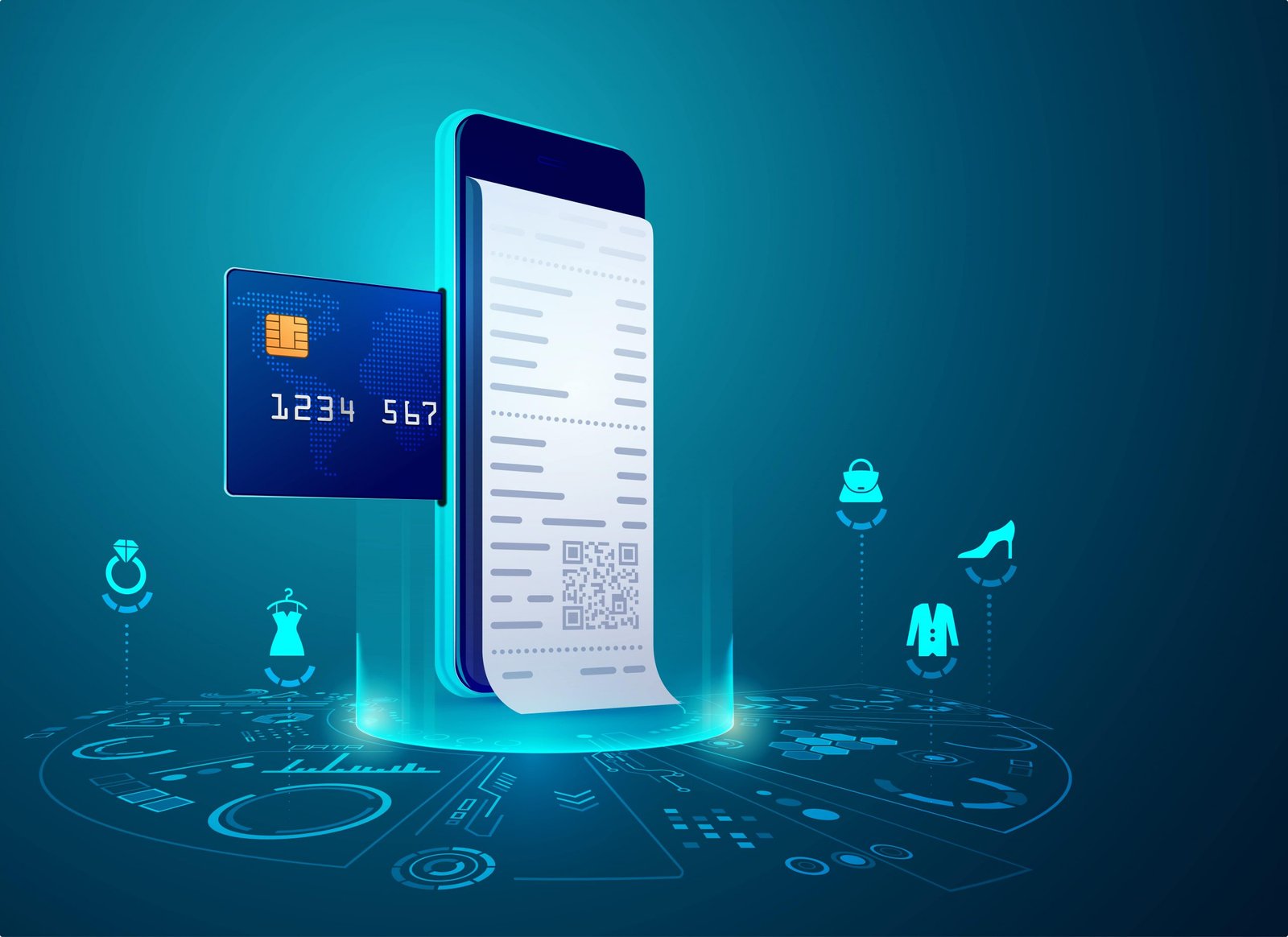Top Global Banking Trends in 2025: Shaping the Future of Finance – The global banking sector is experiencing a transformation like never before as we approach 2025. Innovations in technology, evolving customer expectations, changes in regulations, and the rise of sustainability will continue to impact how banks operate, serve customers, and grow. Banks will need to tenaciously navigate these trends and adapt to the level of innovation, without losing focus on resilience, risk, and trust with customers. Here is an extensive overview of the top global banking trends impacting the future of finance in 2025.

1. Hyper-Personalization Using AI and Big Data
Hyper-personalization, which includes the use of artificial intelligence (AI) and data, is one of the more disruptive trends we’ll see in 2025. Given current expectations, future customers will reasonably expect that banks will know their needs and will offer tailored products and services. Often, algorithmic AI can analyze a wealth of data that will account for unique transaction data, social signals, and behavioral data, permitting banks to offer hyper-personalized banking experiences. As an example, digital banks use predictive analytics to provide recommended savings plans, credit products, or investment opportunities at the point of customer need.
Digital banking has also moved forward in its use of chatbots and virtual assistants, which have become more conversational, contextually aware, 24/7, and instant, providing professional support. The challenge facing banks is how to find the correct balance between personalization while still maintaining data privacy. Alternative governance structures and regulations require banks not only to safeguard customer data but also to acquire customer consent when using their data. The need to create an ethical approach to deploying AI has emerged as essential for banks operating in the personalization space.
2. Embedded Finance and Banking-as-a-Service (BaaS)
In 2025, banking will no longer belong exclusively to banks. Embedded finance—when integrated channel partners (such as retailers, ride shares, or e-commerce apps) offer financial services that are linked (and bolted on) to non-financial services and solutions—completely changes the way customers experience banking and interact with banking services. It will be difficult to find a retailer, ride-share app, or e-commerce app that will not include payment, lending, and insurance within its ecosystem.
Embedded finance is even further catalyzed by the introduction of Banking-as-a-Service (BaaS), where non-banks) can access banking capabilities via APIs made available by licensed financial institutions. The implications for traditional banks are both an opportunity and a threat: new revenue streams and partnership opportunities, but an increase in competition against Fintech and Big Tech firms as they are now providing critical financial services to help society thrive.
3. Sustainable and Green Banking
Sustainability has moved beyond a buzzword and into a defined operational expectation. In 2025, banks will be indispensable in financing a greener economy. Customers, investors, and regulators expect banks and financial institutions to finance sustainable opportunities, divest their financing from high-carbon-emission industries, and fund the renewable energy transition.
Green bonds, ESG-linked loans, and carbon-neutral banking will become commonplace. Banks will interact with emerging technologies such as blockchain and AI as a means of tracking and validating the impact of portfolios in an environmental context, and offer transparency, verification, and accountability in regard to the environmental impacts of using a portfolio. Banks engage a new generation of tech-savvy, environmentally-conscious customers and investors.
4. Digital Assets and CBDCs
Digital currencies are entrenched in mainstream finance in 2025. Many countries have launched Central Bank Digital Currencies (CBDCs), anticipating a modernized payment system, reduced transaction costs, and increased financial inclusion. At the same time, regulated banks are also diversifying into digital assets, including cryptocurrencies and tokenized securities. Banks may now provide secure custody services and trading and advisory options to cryptocurrency and digital securities clients as part of their traditional wealth management product offerings.
It can be challenging to create solid regulatory frameworks that welcome innovation while also facilitating the mitigation of traumatic operations, such as fraud, money laundering, and cyberthreats.
5. Cybersecurity and Resilience
While banks are primarily digital and interconnected entities, cybersecurity is still an urgent issue in 2025. The sophistication and severity of cyber activity are at an all-time high, where the proactive defense and resilience of banks have become essential. Banks are investing significantly more in next-generation and mature threat detection capabilities, regulatory requirements for individual central systems, capabilities to include AI fraud detection, and on-premises or cloud-specific architecture like zero trust. Banks are also facing increased regulatory requirements from governments worldwide related to incident response and customer data protection.
Cyber resilience must not only meet operational resilience; it is now considered operational resilience, while regulatory agencies are adopting additional demands showing that working structures could continue during disruption from cyber and or natural disasters and geopolitical matters.
6. Emergence of Open Banking 2.0
Open banking has come a long way since its inception. By 2025, open banking will now more than just account aggregation and payment initiation; open banking has progressed to securely and consensually sharing financial data between banks, fintechs, and other third-party providers to create truly integrated, customer-centric financial ecosystems. For consumers, open banking means a better overall, holistic view of their finances and access to better deals on loans, insurance, and investments.
For banks, this shift encourages them to innovate and collaborate with other financial organizations. They will also have to learn how to deliver excellently managed and trustworthy customer experiences, as well as compete with new providers to not simply restrict access to data and act as gatekeepers.
7. Workforce Transformation and Future Skills
Finally, the future of banking is not simply in the technology, it’s in the workforce. As banks move towards maturity in terms of digital transformation, changing workforce processes will be critical if they want to accelerate organisational change. With more brands and rival organisations automating basic routine activities, employees will have the time to concentrate on more complex, high-value activities, such as relationship management, business value-adds, innovation, and strategic advisory services.
For banks, higher value-adds on resources depend on the extent to which they can upskill their workforce in terms of AI literacy, data science, sustainability finance, and even cybersecurity areas. In 2025, attracting and retaining digital talent will be pivotal to success.
Conclusion
Top global banking trends are converging in 2025 to fundamentally create a more personalized, sustainable, resilient, and customer-focused financial ecosystem. For banks, the art of success is centered around striking the balance between audacious innovation and maintaining the necessary trust required within the industry, regulatory compliance, and the true commitment to focusing on societal impact. The banks that are willing to adapt quickly will not just survive this dynamic world of banking, but they will prosper.
FAQs
What do you see as the largest trend impacting global banking in 2025?
The largest banking trend is AI and big data, and hyper-personalization. Banks are using advanced analytics to tailor products, services, and advice to individual customers, coupled with strict data privacy.
What impact are Central Bank Digital Currencies (CBDCs) having on the banking sector?
CBDCs are positively impacting the modern payment system and emerging as a way to create financial inclusion. Banks are working on integrating CBDCs as the future of payment and settlement, while also building new products and services wrapped around digital assets and offering secure ways to store and trade digital assets.
How do you see banks better protecting themselves from cyber threats in 2025?
They will be investing more heavily in advanced cybersecurity options and tools, including AI-assisted threat detection, zero-trust networks, and leveraging enhanced incident response plans. Investment, governance, and developing cybersecurity culture through regular, periodic training and risk assessments will all be important resilience strategies to help better deter or shield banks from cyber threats and attacks.








